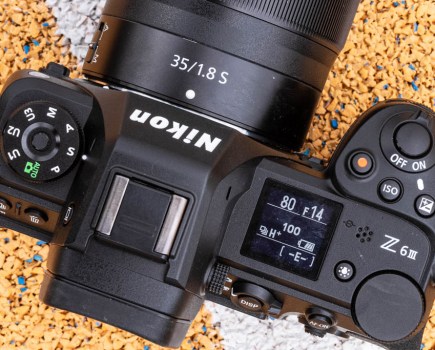Let’s start, not with a digital camera, but with an image. Look at the picture of the cat below. Notice how the eyes, the fur, every whisker, every wisp of hair, are all pin-sharp. And rest assured, the quality is retained when this image is interpolated to A4 size. Now consider this. The picture was shot more than 23 years ago with a Nikon Coolpix 880, whose total pixel count was just 3.34MP. Cost then: a little under $900 / £700. Value now, fully working with battery and charger: $43 / £35.
Given this, it’s tempting to ponder why you need to invest thousands of pounds on the latest digital gear when it’s still possible to get images of this quality from cameras that cost less than $60 / £50. That said, it has to be admitted that today’s supersonic, all-singing, all-dancing, whistle-blowing, bell-ringing digital cameras are not merely in a different league to these 50 quid wonders. They are a whole new species.
Stratospheric sums of megapixels, large sensors, mirrorless electronic viewfinders, mega-autofocus points, facial recognition, touch screen operation, a multitude of shooting modes, time-lapse control, voice recording, Bluetooth and Wi-Fi connectivity, text tagging, auto-correct function, best shot selectors, 4K video… Be honest – how much of this do you really need?
The fact is, if you are happy to accept a few compromises, you can attain quality images from a small APS-C sensor that uses ten or fewer megapixels; used sensibly, you can make do with only a few autofocus points; and the four basic exposure modes will cover most circumstances.
CCD versus CMOS sensors
Cameras of this era and price range most likely use CCD (charge-coupled device) sensors rather than the now more accepted CMOS (complementary metal-oxide semiconductor) types, but don’t be put off. Although CMOS is preferable for larger format sensors, smaller CCD sensors used in smaller cameras can stand up quality-wise against CMOS. So what’s the difference?
CCD sensors use a lot of energy, resulting in poor battery life and a tendency to heat up quickly. This means only small sensors can deliver live view images to small LCD screens. They also output an analogue signal that is read out relatively slowly, a line of pixels at a time. This signal then has to be converted to digital by an analogue-to-digital converter (ADC) before it can be deciphered by the camera’s processor.

Modern CMOS sensors output digital signals directly. Each column of pixels has its own ADC integrated onto the chip, enabling higher readout speed and lower image noise. CMOS sensors also have a lower power consumption, which means they don’t heat up as quickly, allowing for faster video recording and shooting, and battery life is longer.
So yes, CMOS sensors are better. But despite CCDs burning through batteries faster than you might like, with smaller sensor cameras you won’t be disappointed by picture quality at low ISO settings. After all, the Leica M8 and M9 both used CCD sensors. What better recommendation can you have than that?
The collectability factor
Older digital cameras are suddenly becoming collectable, often because of their strange shapes and weird technologies. In many ways, the dawn of digital was a lot like the early days of film photography when manufacturers experimented with many different shapes and sizes of cameras. Likewise, early digital manufacturers found they could break free from tradition with unconventional designs. For example:
The Pentax EI-C90, the company’s first digital model in 1996, was shaped like a flat box, part of which formed a detachable camera and the other part housing a monitor with a pop-up screen. It’s an interesting, and rapidly becoming expensive, collector’s item. But with an image size of 0.41MP, the EI-C90 is hardly a camera for use.
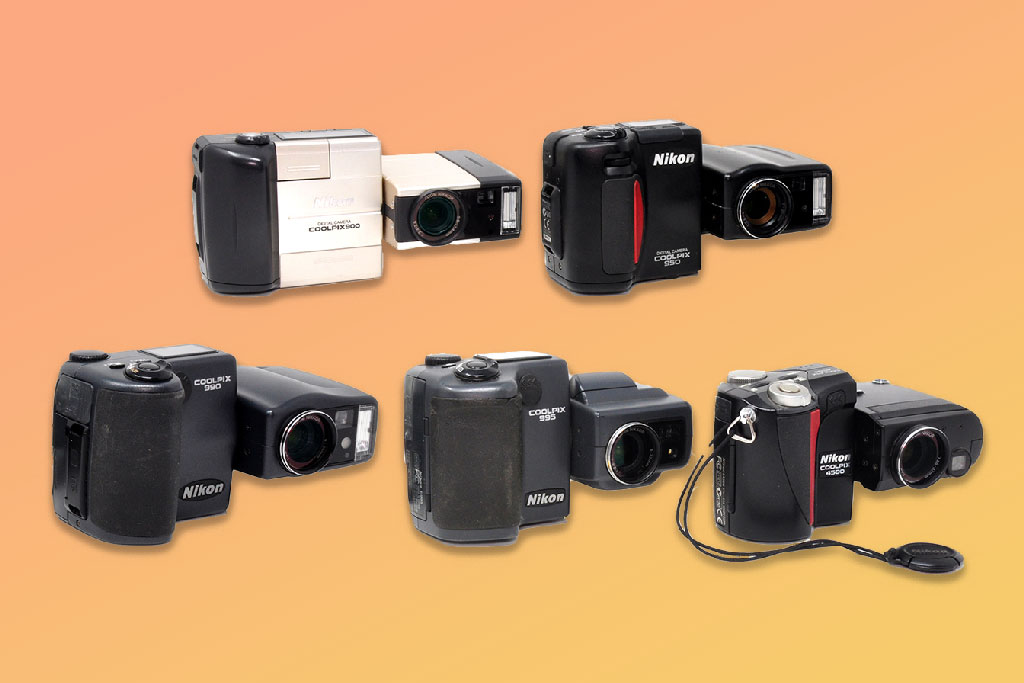
Or how about the Minolta Dimage V from 1998, whose manually operated 4.8-13mm zoom lens could be detached from the body and waved about on the end of a 1m long cable to shoot in places other digital cameras might not reach. The image size was a more respectable 3.5MP, but it was recorded on SmartMedia cards, making it another one better reserved for the collector’s shelf.
In 2002 Sony introduced the Mavica CD400. It was well specified with a Carl Zeiss Vario Sonnar f/2-2.5 3x optical zoom lens, five-area multi-point autofocus, multi-pattern metering, shutter speeds to 1/1,000sec and a 4MP sensor. But it recorded its images on mini compact discs, making it still usable, but not very practical.
Between 1998 and 2002 Nikon introduced a range of split body cameras in which the part holding the lens swivelled 270° against a main body section that held the LCD screen and main controls. Models included the Coolpix 900, 950, 990 and 4500, the first of which only shot 1.2MP images. But work your way through the range to the Coolpix 4500, and you get a 7.85-32mm f/2.6-5.1 Nikkor lens, 16 scene exposure modes, pop-up flash, macro setting and five-area autofocus, with the camera producing 4MP JPEG or TIFF files. The style was interesting but never went much further. So these cameras are collector’s items but with later models teetering on the verge of usability.
Choosing for using
Although a great many digital cameras costing $60 / £50 and less are still usable, there are pitfalls to avoid. The first is that older cameras have a habit of working perfectly right up until the time they don’t, and once they’re dead, they’re dead. So try thoroughly before you buy.
Let’s talk megapixels. By today’s standards, 5MP seems ridiculously low, with an image size typically of 2592 x 1944 pixels. But if all you are going to do is look at your pictures on a computer screen, that’ll more than fill a standard Full HD display. If you want to print a 5MP file, you’ll get an image of slightly more than 16x21cm at 300dpi, which takes only a little interpolation in Photoshop to get it up to an A4 size of 21×29.7cm.
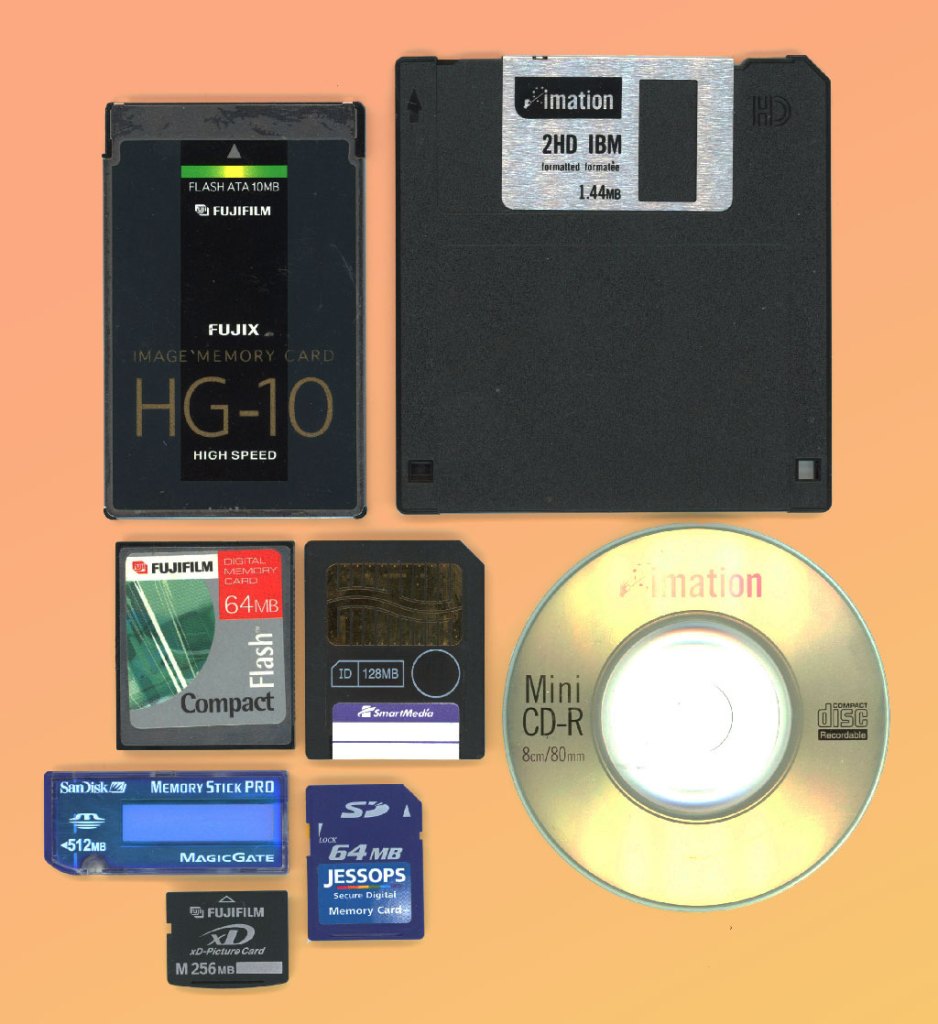
How about image storage? Early digital camera makers experimented with media of all shapes, sizes and capacities. They included PC cards, 3.5in floppy discs, mini compact discs, SmartMedia, CompactFlash, Sony Memory Stick cards, xD Picture Cards, and early versions of the SD cards we still use today. Some of these can still be bought new providing you invest in a universal card reader, inexpensive and easy to find on eBay, for transferring images to your computer. SD cards or the larger CompactFlash types that preceded them are probably the most practical. Be aware, however, that some older cameras will not operate with cards whose capacities exceed 2GB.
When buying an older digital camera, it’s almost inevitable that the charger has been lost. So buy a universal charger, also easy to pick up on eBay where, along with Amazon, replacement batteries can often be found. Many older digital cameras use AA batteries which, coupled with an old CCD sensor, get eaten up very quickly. Rechargeable AA batteries and a charger that handles four at a time are the answer to that.
Cameras to consider
Here’s a small selection of early digital cameras, along with brief specs, all capable of delivering the goods for an outlay of roughly $50 / £50 or less. Autofocus and a minimum of the usual exposure modes – shutter and aperture priority, program and manual – can be taken for granted on most of the models. Guide prices assume the inclusion of a battery and charger.
Nikon D70 (2004)
Guide price: $55 / £45

This was the first digital single lens reflex (DSLR) to break the £1,000 barrier. Today, if you search around, you can still find one that just about squeezes under the £50 threshold. Pop-up flashgun, optical reflex viewfinder, 6MP sensor, five autofocus points, 30-1/8,000sec shutter speeds, 1.8in LCD screen, Nikon F lens mount, ISO 200-1600, three JPEG quality levels.
Nikon Coolpix 880 (2000)
Guide price: $45 / £35
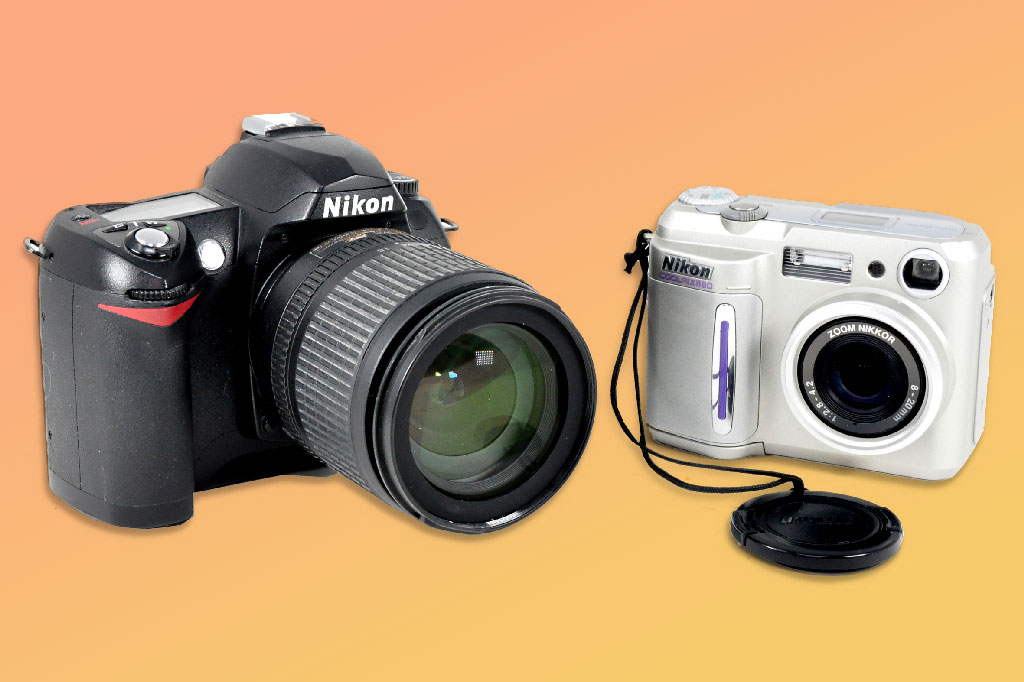
Here’s a neat little compact camera that is made up of the internal workings of a Coolpix 990 split body model squeezed into a rigid case that measures just 9.5x7x5.5cm. Built-in flashgun, 3.34MP sensor, optical viewfinder, 1.8in LCD screen, three autofocus modes, 38-95mm zoom lens, 8-1/1,000sec shutter speeds, ISO 100-400, records JPEG and TIFF files.
Minolta Dimage Z1 (2003)
Guide price: £20-25

With its unusual round body and attached hand grip, plus a control panel on the back that looks like something from a 1950s science fiction film, this is an early digital camera to appeal to collectors and users alike. Progressive Capture feature that saves images in the buffer memory when the shutter button is held down, pop-up flash, 3.2MP sensor, 5.8-58mm 10x optical zoom lens, macro shooting down to 50cm, three autofocus modes, three metering options,
six subject exposure modes, 4-1/1,000sec shutter speeds, moving mirror reflects LCD image into viewfinder.

Fujifilm FinePix 6800 Zoom (2001)
Guide price: £25-45

Back in the day, Leitz got together with Fujifilm to produce the first consumer Leica-badged digital cameras. Recently, the Leicas have soared in price, while very similar Fujifilm versions like this one have remained relatively inexpensive. Unusual Porsche-designed upright body, pop-up flash, 3.3MP sensor generating a 6MP image, ISO 100-400, 8.3-24.9mm optical zoom lens, optical viewfinder, continuous shooting at 3.3 frames per second for five frames, 2in LCD screen plus circular panel to display camera modes and settings, 3-1/2,000sec shutter speeds.
Fujifilm FinePix S602 Zoom (2002)
Guide price £15-20
This camera’s gimmick is that it uses the third generation of Fujifilm’s so-called SuperCCD technology in which pixels are arranged in a 45° honeycomb pattern instead of the conventional square layout. The result is a 3.1MP sensor that is reckoned to produce a 6MP image. Pop-up flash, 7.8-46.8mm zoom lens, electronic viewfinder, 1.8in LCD screen, JPEG and TIFF files, ISO 160-1,600, autofocus macro down to 1cm, 15-1/1,000sec shutter speeds.

Casio Exilim EX-Z77 (2007)
Guide price: £30-40
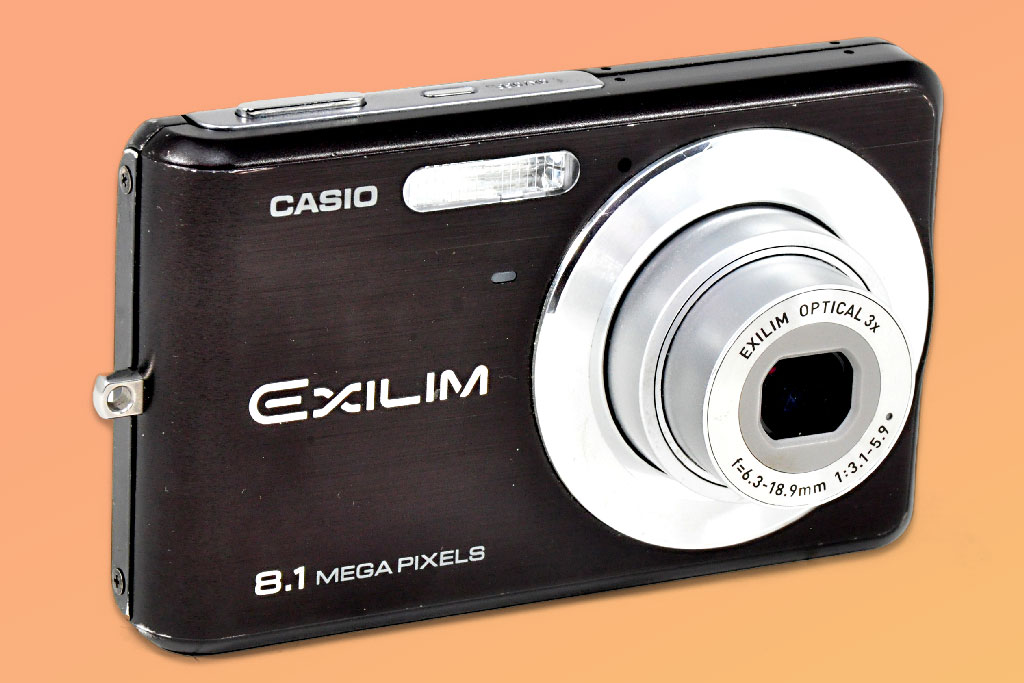
This is just one of a vast range of very similar credit card-size cameras that came from a multitude of manufacturers. It’s not for the creative photographer, but at 9.5x6x2cm it’s very pocketable and makes an ideal take-anywhere little camera. Built-in flash, 7.2MP (despite for some reason claiming 8.1MP on the front), 4-1/2,000sec shutter speeds, large 2.6in LCD screen, three metering modes, 38-114mm 3x optical and 4x digital zoom, fully auto exposure.
Conclusion
Cameras like these are still usable and becoming collectable. Buy one for its collectability and you might be agreeably surprised by the image quality. Buy one for its usability and you could discover you’ve started an unexpected collection.
The great thing about old digital cameras, is that there a thousands to choose from! For more options have a look at the best vintage digital cameras.
Related reading:
- Best cameras under £300
- I bought an old digital compact for £5. Am I mad?
- It’s official: older digital compact cameras are back in fashion
Follow AP on Facebook, Twitter, Instagram, YouTube and TikTok.






